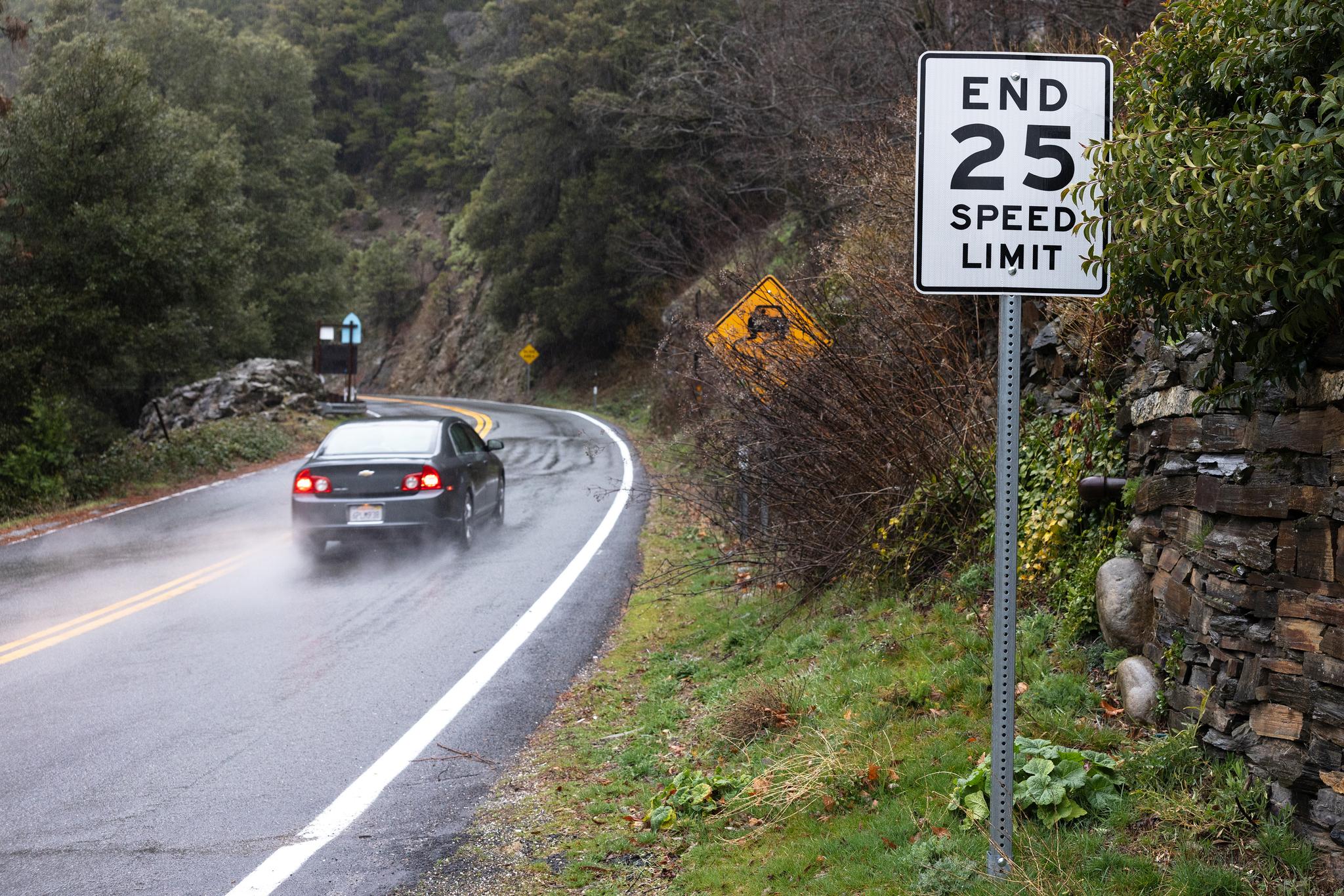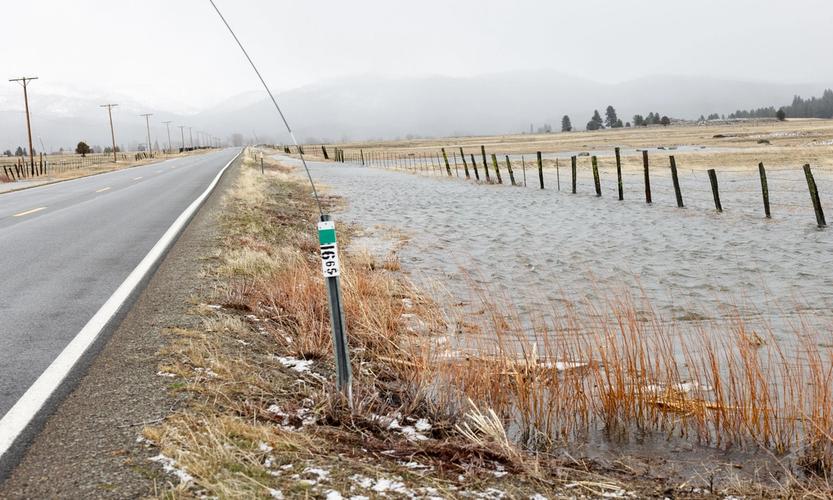Supervisors Address Community Concerns in Downieville
February 7, 2025
DOWNIEVILLE — The Sierra County Board of Supervisors met on Tuesday to discuss several local issues affecting residents in recent weeks.
Public Hearing Set for Sierra City Speed Limit Changes

Proposed changes would shorten Sierra City’s 25 mile-per-hour zone.
At the last meeting of the Board of Supervisors in Loyalton, the Board received notice from Caltrans that a study had concluded speed limits in Sierra City should be generally increased. Though Caltrans allowed the Board to hold a public hearing to gather feedback, it was thought that an ordinance could be passed to prevent any limits from changing. That, however, did not turn out to be the case, as that power does not extend to state highways.
According to County Council Rhetta Vander Ploeg, only the City of Malibu had attempted to enact a similar ordinance along the Pacific Coast Highway. She left a message with Malibu City Manager Steve McClary on Friday, hoping to gain some insight into his position on the matter, but had not heard back yet on Tuesday morning. Sierra County will instead move ahead with a public hearing on March 4th at 1:30 PM for the community to give feedback and comment on the proposal at the Supervisors’ Chambers at the Downieville Courthouse.
The Board is unanimously against the proposed increased speed limits. Lee Adams noted that he has received several comments from concerned community members who believe the proposed changes would have severe safety consequences, especially during the summer when pedestrians, bicyclists, and pets are sharing the road. Adams has first-hand experience with the dangers in that area, having driven the ambulance for a patient who was struck there by a vehicle doing 35 miles per hour with devastating consequences he still thinks about today.
Sheriff Mike Fisher explained that the determinations made by the Caltrans survey are made based on the average speed of drivers on a given section of road under ideal conditions with no obstructions. The study was not conducted at a time when pedestrians and mountain bikers might be expected because that would be an unnatural obstacle that would cause a driver to slow. The reasoning behind these studies is to avoid “speed traps,” which are illegal in the state. However, Sierra County Supervisors, Department Heads, and many community members believe that mitigating circumstances make the zones necessary.
Supervisors are united in pushing back on this issue over the worries that speed limits will be raised throughout the County since all previously completed studies in the area are now outdated. A Sierraville study is in its final stages and is expected to recommend limits significantly higher than the current 35 miles per hour. According to Caltrans, the only reason that comments made during public hearings would affect the outcome is if conditions exist that are not “apparent to the driver,” criteria that Public Works Director Bryan Davey does not believe will be met.
It is the opinion of Caltrans engineers that speed limits do not reduce speeds. Instead, they prefer engineering decisions that calm traffic and create an environment that naturally slows drivers. An example is the high-visibility crosswalk, a solution implemented in North San Juan in Nevada County. The Sierra County Public Works Department will explore similar solutions for Sierra City, but cost to the County is a prohibiting factor for many potential designs.
For now, the Supervisors and other community members are urging concerned citizens to attend the public meeting on March 4th. The Board will also send letters to California Congresswoman Heather Hadwick and Senator Megan Dahle, Caltrans Supervisors, and the California Highway Patrol, hoping those offices will attend the meeting, agree with the County, and influence the final Caltrans decision. The Board also hopes that the legislature will consider allowing counties to issue ordinances maintaining speed limits on State Highways.
Sierra City Transfer Station Fire Discussion Continues
Last week’s fire at the Sierra City Transfer Station, caused by embers from a smoldering burn pile carried by wind into nearby brush, garnered community concern about the County’s green waste burning practices. On Tuesday, Public Works Director Bryan Davey led a discussion on the feasibility of different practices. His department has already changed protocol so that embers are not pushed together into a pile to continue burning out but are spread out to be extinguished immediately.
Several options were brought up to allow the County to dispose of green waste safely. Still, all had the downside of massively increased cost. One possibility is purchasing an air curtain burner, which consists of a large contained burning chamber that would need to be transported between transfer stations. Though it would allow burning to continue on-site, the cost of a burner can be as high as $300k, and additional specialized transport equipment may be needed. Maintenance costs would also increase as the fire-feeding process would become more involved.
A second option is to truck debris unburnt to another facility, potentially in Quincy. This option also drastically increases cost, as transportation alone is exceedingly expensive. The nature of the road leading up to the Sierra City Transfer Station also means that larger trucks would not be able to reach the site, causing further headaches.
The cost to the dump user of pursuing any option is unclear until further analysis is completed. Supervisor Dryden worries about increasing the cost to the user, which could discourage people from pursuing the removal of combustible material from their properties for the purpose of home hardening against wildfires. The Solid Waste Committee, consisting of Supervisors Roen and LeBlanc, will convene to determine the specifics of potential solutions and funding options, including grants. Findings will then be brought back to the Board for a decision.
In the meantime, the Department of Public Works will change its habits by notifying Sierra City Fire and the U.S. Forest Service whenever a burn pile is ignited. A patrol log will also be kept to increase documentation and accountability. Public Works hopes to work more closely with local fire departments and the Forest Service to better determine fire risk. Other monitoring solutions, such as a camera system using Starlink Internet, will also be explored.
Featured Articles

FEMA Unveils Expanded Floodplain Maps for Sierra Valley →
November 4, 2025
FEMA’s new maps could require more Sierra Valley homeowners to purchase flood insurance.
Community Supports UPS Driver Garitt Cox in Board Presentation →
November 4, 2025
Fish & Wildlife Lethally Removes Sierra Valley Problem Wolves →
October 27, 2025
Plumas-Sierra CattleWomen Disband After 60 Years →
October 28, 2025
Exotic Animals Delight Downieville Students at Wild Things Assembly →
October 20, 2025